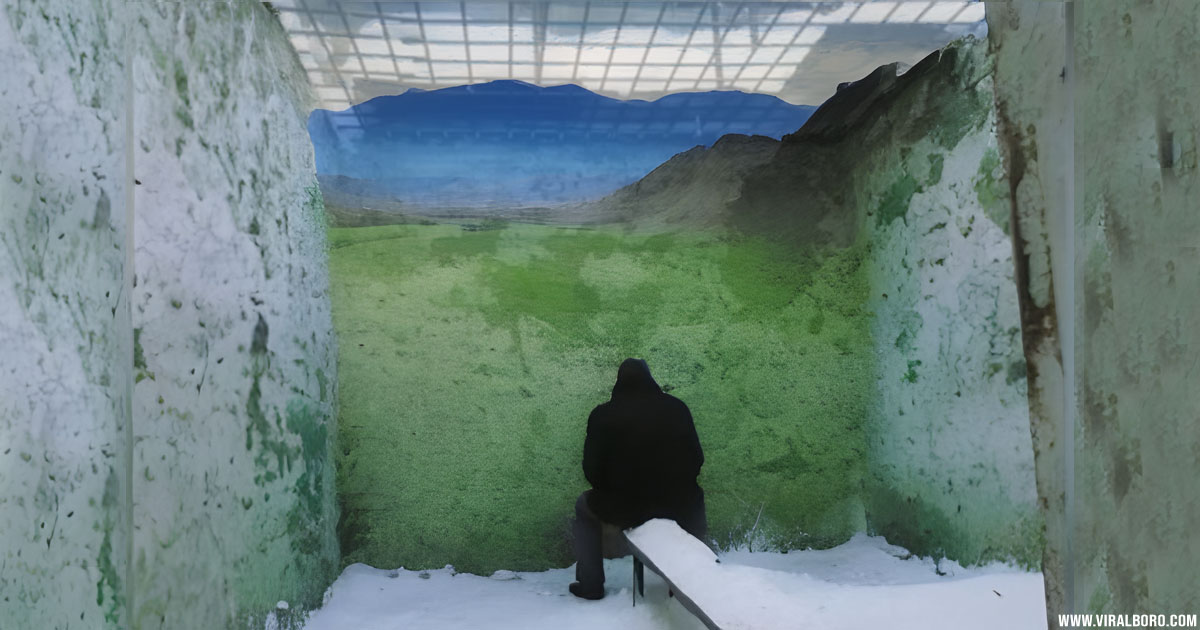Federal penal institution - Black Dolphin
Federal penal institution "Correctional Colony No. 6 of the Federal Penitentiary Service for the Orenburg Region" ("Федеральное казённое учреждение «Исправительная колония № 6 Управления Федеральной службы исполнения наказаний по Оренбургской области»"; until 2007 - YU-K25/6) - a correctional colony of a special regime for life-term prisoners located in the city of Sol-Iletsk near Lake Razval (Orenburg Region). The largest colony of this type in Russia (for 1600 people). According to some reports, as of 2009, about 863 people were held in the colony. The number of staff is about 900 people.
Who was released from Black Dolphin?
In February 2018, Anvar Masalimov gained nationwide fame after it became known that he was released on June 22, 2016, upon serving 25 years of imprisonment. The fact of his release was widely covered in the media, and his brief time of freedom was considered the first in modern Russian history.
Is it possible to escape from Black Dolphin?
For the first time, a successful escape was made from the "Black Dolphin" colony. On the evening of October 22, 2016, a 32-year-old man who was serving a sentence at Colony No. 6 near "Black Dolphin" for robbery managed to escape. He was due to be released in July 2017. The man was engaged in the production of slag blocks and was well-regarded by the management, who had transferred him from a high-security unit to a settlement colony.
Who is serving time in Black Dolphin and for what?
Here sits Vladimir Nikolaev - the same one who, while drunk, nailed his neighbor and tried his meat, and then began to kill deliberately with the goal of eating his victim. Here sits Radik Galiaukberov, the former leader of the Kazan criminal group "Hadi Takash" nicknamed Rajah, who once engaged in robbery and extortion. Yevgeny Nagorny, the owner of a car service who killed his customers for their expensive cars. Oleg Rylkov, who raped 37 little girls, four of whom he killed.
What makes Black Dolphin dangerous?
In order for the staff to always be on guard and not forget who they are working with, signs listing the complete list of offenses of the inmate are posted at the entrance to each cell. Each cell in the Black Dolphin prison is a cell within a cell. Additional bars are installed in the 4.5 square meter room to prevent convicts from approaching the windows and doors freely. Contact between prisoners is minimized. During transport, strict isolation rules are observed. An inmate can exchange a maximum of a couple of words with their cellmates per day.
Why "Black Dolphin"?
Colony No. 6 of the Federal Penitentiary Service of the Orenburg Region borrowed its name "Black Dolphin" from a huge sculpture of this animal made by prisoners using papier-mache technique. Today, this work of "chamber" art is part of a fountain composition in the courtyard of the correctional institution.
History of "Black Dolphin" before the 2000s Before we delve into the chronicles of Russia's scariest and harshest zone, let's briefly recall the history of its prison buildings.
History of Black Dolphin
The history of the Orenburg prison in the border town of Sol-Iletsk dates back to the 17th century. According to unconfirmed reports, convicts were settled on these lands as early as the reign of Empress Elizabeth Petrovna (from 1756). According to the official version, the prehistory of the "Black Dolphin" began during the reign of Catherine II. After suppressing the Pugachev rebellion in 1773, the state needed a new fortress for lifelong imprisonment of the bandits. Since the rebellion broke out in the Orenburg region, a new prison was established there. The rebel convicts were incarcerated in the Il'etskaya Zashchita fortress and worked in the salt mines. All subsequent Russian rulers did not overlook the convenient prison.
By 1893, the Il'etsk prison department held up to 400 prisoners, but they no longer engaged in salt mining. The work became easier: sewing clothes, shoes, making plaster, and gardening.
After the revolution of 1905, the prison department in the Il'etsk fortress was transformed into a transit prison.
After the revolution of 1917, a concentration camp was established here, which existed until 1942. At first, the camp housed convicts sentenced for desertion, assisting the White Guards, as well as military personnel convicted of drunkenness. Many of these prisoners were granted amnesty after the completion of repairs in 1919.
In 1942, the institution changed its status once again, transforming into the Sol-Iletsk prison of the NKVD No. 2 for the detention of suspects. That same year, the famous German actress Karola Neher died here.
In 1953, the correctional institution at the site of the current Dolphin prison came under the control of the Ministry of Internal Affairs. From 1965, only prisoners with an open form of tuberculosis served their sentences here.
In the early 2000s, the prison received its current status as a corrective labor colony of a special regime for convicts serving long sentences, including life imprisonment. Since 2007, "Black Dolphin" has had the official name of the Federal Penitentiary Service Correctional Colony No. 6 in the Orenburg region of Russia. The features of the strictest prison regime Today, "Black Dolphin" is the largest correctional colony of a special regime in Russia for those serving life sentences. Two three-story prison buildings can accommodate up to 1600 people. However, in reality, there are almost half as many inmates in "Dolphin" - 863. The order in the institution is ensured by almost the same number of employees - 900. There are more guards than prisoners because the latter are particularly dangerous. About 160 convicts are registered with a psychiatrist.

